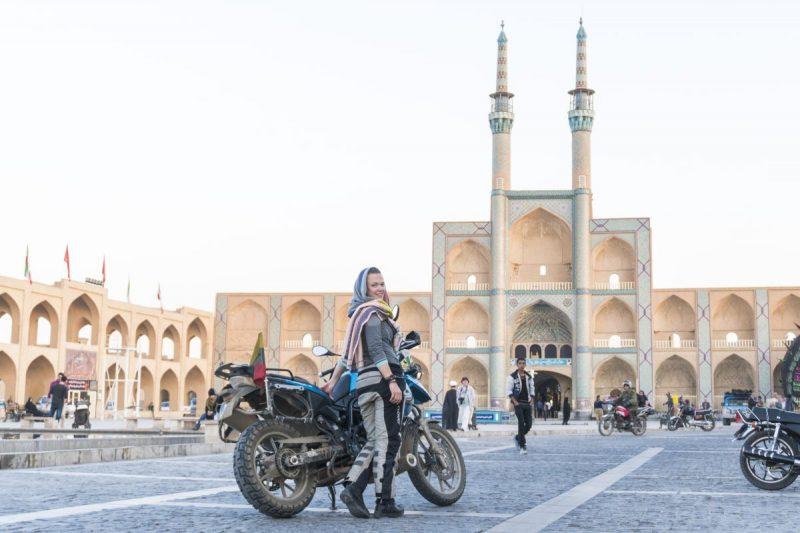
Tips on Riding Iran: What You Need to Know
BY ASTA DOVYDENAITE
Riding Iran, a country with a rich Persian history, is an extremely intriguing adventure.
The strict Islamic government makes Iran a unique and sometimes challenging country to ride a motorcycle through, and in some ways it can feel they are quite cut off politically and economically. But as a foreigner, this also offered a different world to explore than what we were used to, which made for a special trip for us Europeans. So many aspects of life in Iran were different, and it made our time unforgettable. Preparing to ride through Iran, however, is an important first step, and I’ve written up some tips for your own visit, based on my own experience riding Iran in 2017.
Have Your Paperwork Ready
You can’t make a spontaneous decision to ride your motorcycle or drive your car into Iran unless you have a lot of money to spare; they will ask you to leave a deposit equal to 400% of you vehicle’s value at the border, unless you have a Carnet de Passage. But beware that some countries issuing a Carnet might increase the price if you list Iran, while it makes no difference in others. And then, of course, you need a visa for yourself. Obtaining one is a quick and easy process for a European, a bit more complicated for a UK, Canadian or American citizen and impossible and for an Israeli citizen.
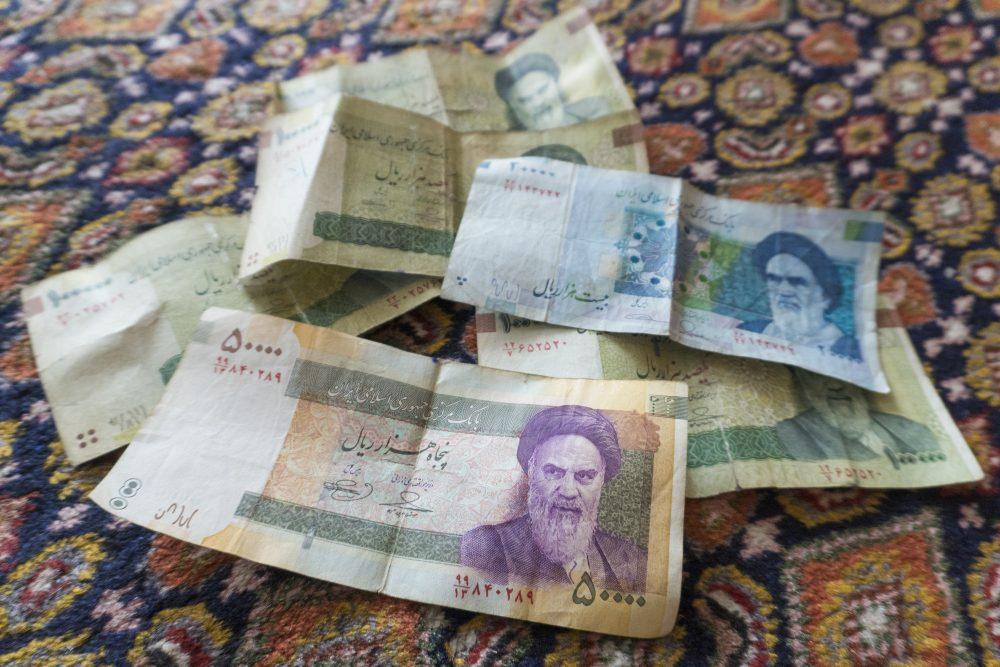 Consider Your Wardrobe
Consider Your Wardrobe
In Iran, pay attention to what you wear. The biggest difference for many will be the requirement for women to cover their heads with a hijab regardless of religion. It must be done even in the photo of your visa application, so be prepared. Women are also required to wear long sleeves and long pants (with longer shirts over them to cover one’s bottom) or long skirts in public places. At home women mostly relax, but if the family you are visiting is more conservative, women may keep the hijabs on, in which case you should consider doing the same. Men should also wear long pants, with more freedom permissible at the beach. This is a good reason to consider visiting Iran in early spring or autumn, since the temperatures in summer can reach 40C (104F) degrees. That said, as I was on a motorcycle and did not have a long shirt, I stuck with just the hijab and never had any issues.
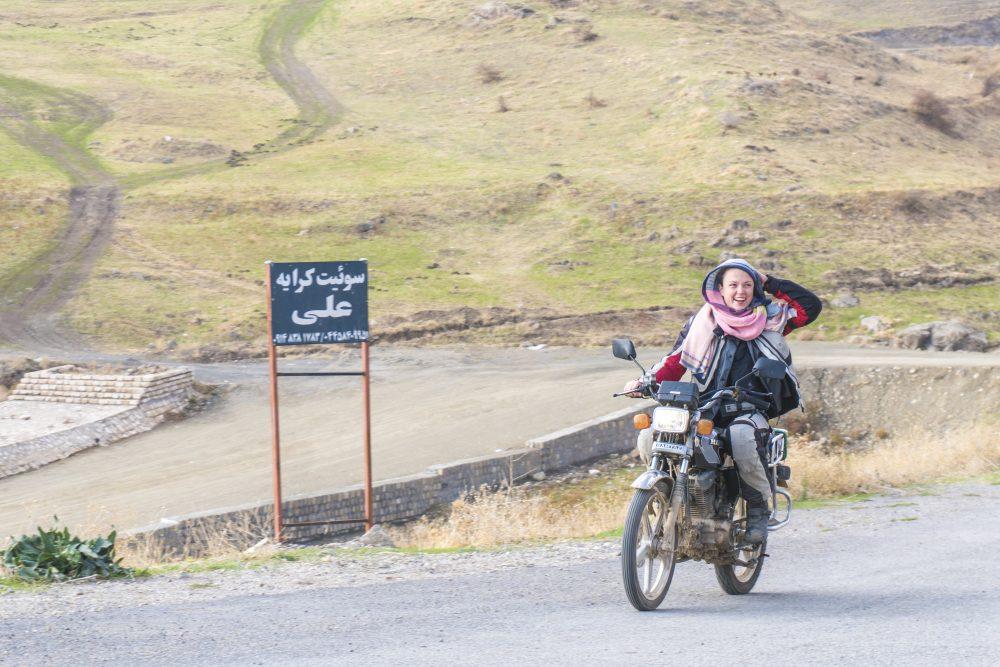 Shoes Sleep Outside
Shoes Sleep Outside
All shoes are taken off while entering the house and left outside. Most people walk barefoot around the house (or with socks on), but sets of slippers are kept for toilet and kitchen use. They’re not there just for your comfort, though; it’s obligatory to use them to avoid tracking crumbs, dirt or anything else from the bathroom or kitchen elsewhere around the house.
Get to Know Travelers
Before motorcycling around the world became a pop thing in the Western world, before Ted Simon learned to ride a motorcycle and left Britain, before Helge Pedersen got on his BMW called Olga, and way before Ewan and Charley got to New York, Iran had the Omidvar brothers. They left Tehran in 1954 on two English 500cc Matchless motorcycles to travel around the world for 10 years in search of the most primitive human tribes. One of the brothers, Abdullah, now lives in South America, while the second one, Issah, has opened a museum in Tehran to exhibit some of the impressive souvenirs they brought back from their travels. And it’s worth visiting! We were lucky enough to meet Issah while there, and he greeted us warmly and became our private guide in the exhibition, complete with incredible stories of their journey.
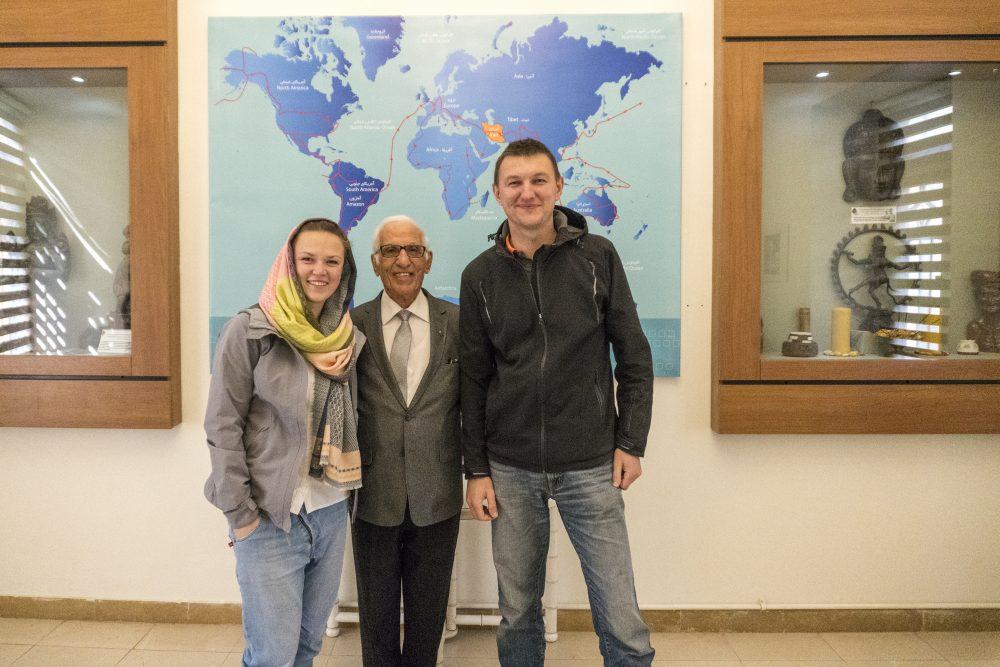 Persian Hospitality
Persian Hospitality
Hospitality in Iran is at a whole different level than many other places. Persians get excited to see tourists visiting their country and are ready to do anything to make you feel welcome. Crossing the border from Azerbaijan to the city of Ardebil, a man immediately invited us to stay at his home, and the trend continued throughout our ride. In bigger cities people often asked where we were from and took photos with us, while many others connected with us on Instagram (one of the more popular social network platform in Iran). Iranians also use Couchsurfing a lot and love hosting travelers.
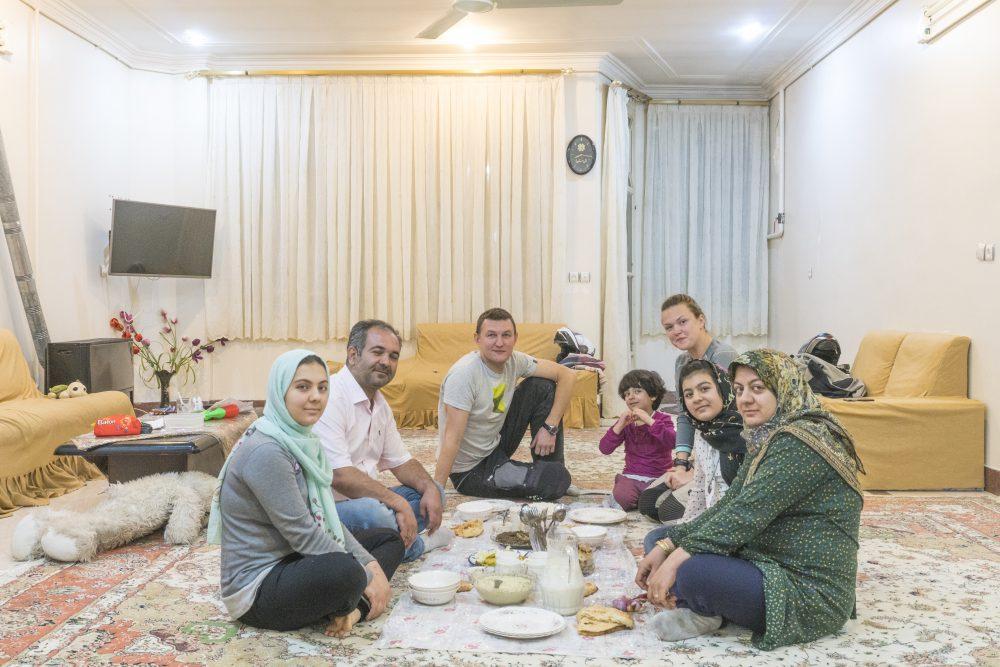 Staying Connected
Staying Connected
Because of the strict Islamic government, internet is censored in Iran. Sites like Facebook, YouTube, Twitter, Couchsurfing and anything that is related to Israel are blocked and can only be accessed via VPN. People widely use VPNs and there are many options which are free and work quite well. We used the Psiphon app on our iOS and Android phones and Windows laptop. Instagram and most Google services and many other sites are accessible directly, though internet speeds are quite slow. Local TV channels are strictly regulated; unacceptable scenes in the movies are censored, sometimes changing the whole plot. During prayer (Shia Muslims pray three times a day, unlike Sunnis who pray five times a day) every TV station pauses the program and broadcasts a recording of Azan, a religious song and call to pray. Ironically, many people get satellite receivers to gain access to foreign channels and are able to watch programs like the Victoria Secret fashion show.
Braaaaaap
Only small motorcycles are imported into Iran, with a cap of 250cc single cylinder bikes. An exception is made for sports bikes used on tracks or for short distances to get to the track. Thus, our 800cc bikes really stood out and brought us a lot of positive attention even though it is said to be forbidden for women to ride motorcycles in Iran. But these rules aren’t applicable to tourists, and I rode freely throughout the country on my relatively big bike, while we received hundreds of encouraging thumbs up from local women.
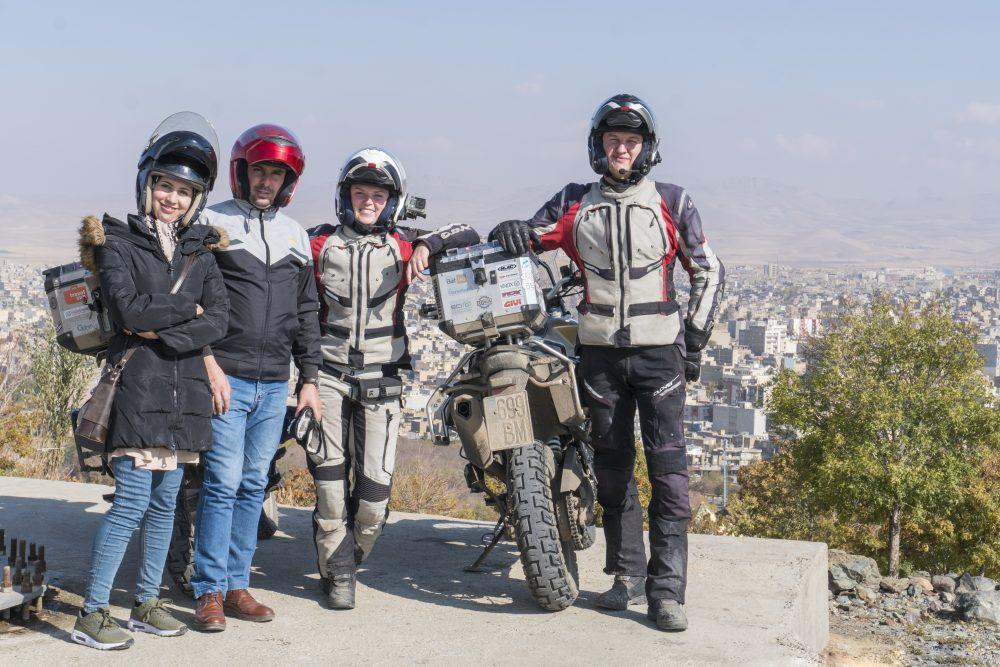 What Day Is It?
What Day Is It?
Iran uses a different calendar, and at the time of writing it is 1396 in Iran. Don’t expect everyone to be able to answer questions like, “Do you start the school year in September?” They also count weekdays differently and weekends in Iran are Thursday and Friday, and the time zone is GMT+3:30. If I were an Iranian, my birthday would be 1366/05/18. And even on our visas, the dates were written according to their calendar, but since they use different numbers, it was a little difficult to understand.
Alphabet and Numbers
Speaking of numbers (and letters), they use the Perso-Arabic alphabet and Persian numbers. The numbers are not hard to learn to read and I even managed to learn to pronounce numbers from 1 to 10 just in case, but the letters are another story. When they are written separately they often look completely different from when they are written in the word. So learn at least the numbers to be able to read the prices, and just go with the flow.
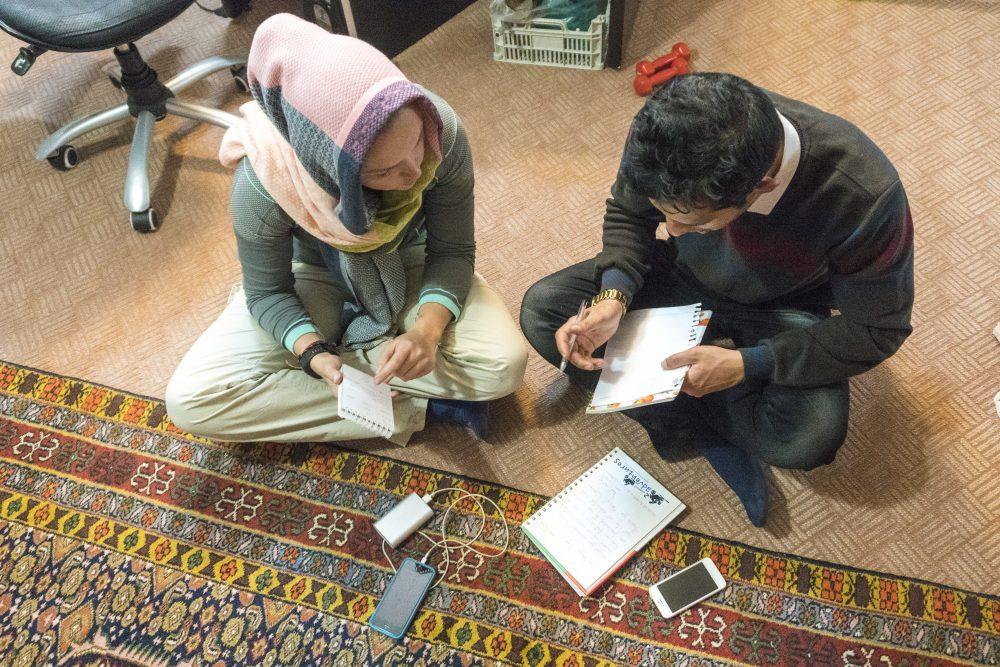 Road Signs
Road Signs
You shouldn’t have many problems reading traffic signs as most of the signs are written in both Perso-Arabic and Latin alphabets and warnings and instructions are translated to English. Speed limit signs have both Persian and Arabic numbers (which is what the Western world uses), but we saw very few locals who actually obey these signs. There are also signs stating motorcycles are forbidden on highways, but just as locals ignore speed limit signs, we ignored those and never had any trouble. Highway police would give us thumbs-up and smile when they saw us riding by. There are also toll booths to pay road-tolls on the highways, but we were always waved by without paying.
Who Needs Road Rules Anyway?
In general Iran is a safe country to travel, but for those who are traveling on their own wheels, be prepared to face life threatening situations on the road daily. It seems to me that many years ago there must have been a person in Iran who implemented the principles of road rules and infrastructure… but that knowledge seems to have been thrown to the wayside. Lanes are barely acknowledged, locals shoot across three lanes of traffic at the last second to make a turn, trucks turn without hesitation when they don’t have the right of way, and to make things more chaotic, locals in cars are just as curious when driving as when walking, and frequently rolled down their windows to holler greetings or snap photos while flying down the road. It’s a lovely gesture, but dangerous and distracting to the uninitiated.
Got Fuel? Look for Red, not Green
After riding in Uzbekistan where we dealt with terrible fuel, my hopes were high for Iran, as a country that has a good supply of its own oil. However, the old Peugeot 405 cars so popular in Europe in the 90s are still used widely throughout Iran, and require only the cheap 91 octane, recognizable by the green painted pump. We preferred to have the best quality fuel for our motorcycles, so we searched for Premium, and only found it in some gas stations along the main highways or in the larger cities, with pumps painted red.
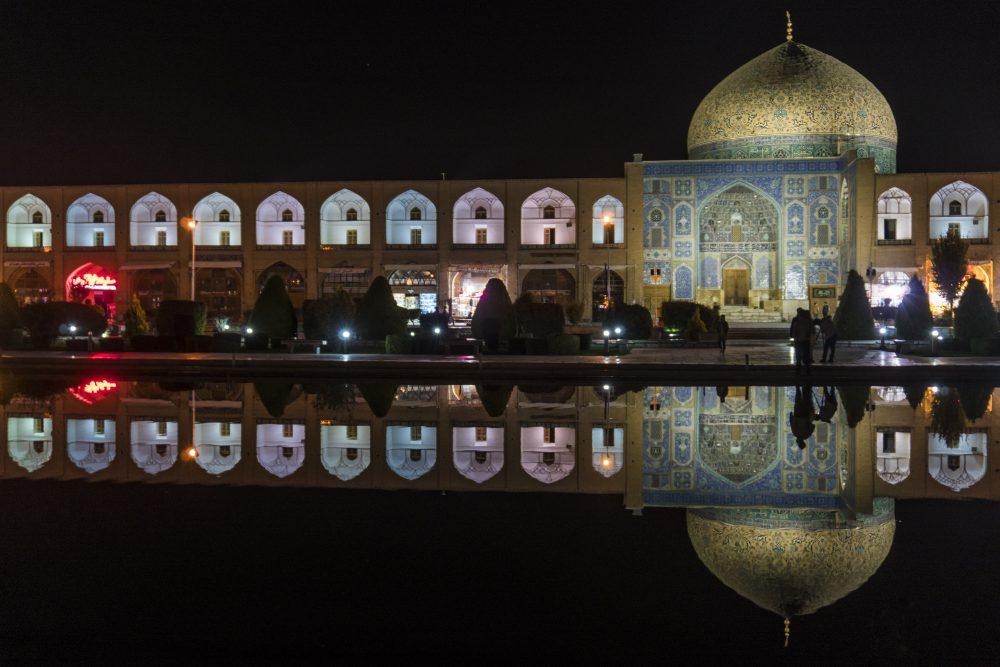 Know the People
Know the People
Iranians are not Arabs, but rather Persians, and they speak Persian, not Arabic. Iranians are also Shia Muslims, while much of the Arab world is made up of Sunni Muslims. These are two different directions of the same religion, and are in constant strife. These are important distinctions, and being culturally sensitive will help you connect with Persians and have a great visit.
Money Money Money!
Money is tricky in Iran. Not only do Visa or MasterCard bank cards not work in Iran, as their banking system is disconnected from the rest of the world because of sanctions, but they have a tricky system in displaying prices, too. The currency in Iran is called Rials, but the prices are usually displayed in Tumans. At the time of writing, 1 Euro ($1.24USD) is about 40,000 Iranian Rials and that equals 4,000 Tumans. Exchange rates on the streets or even in official-looking exchange shops are better than in banks, which use official exchange rates that differ from the (better) street rates.
Tourist Prices
Don’t be surprised if you’re charged 10 times more than the locals for tourist attractions. It’s normal. In some places you can ask a local to buy tickets for you, but other times that may not be possible since it might be obvious you’re a tourist.
Be Flexible
Never in my life did I think my body lacked physical flexibility… until I visited Iran. Sitting on the ground cross-legged is very common, with families enjoying meals gathered in a square on the floor. Women prepare the food for the family while sitting on the ground in the kitchen or in the dining area and carefully sorting rice, and I even saw a woman sitting cross-legged on a little cloth in the parking lot of the ancient city of Persepolis, breastfeeding her baby.
Have you ever tried sitting like that for an hour or two? I tried in Iran and after five minutes it become painful. Nevertheless, Iranians were always very attentive and numerous times they offered us chairs or pillows. But if you’re planning to visit Iran, be prepared to test your joints.
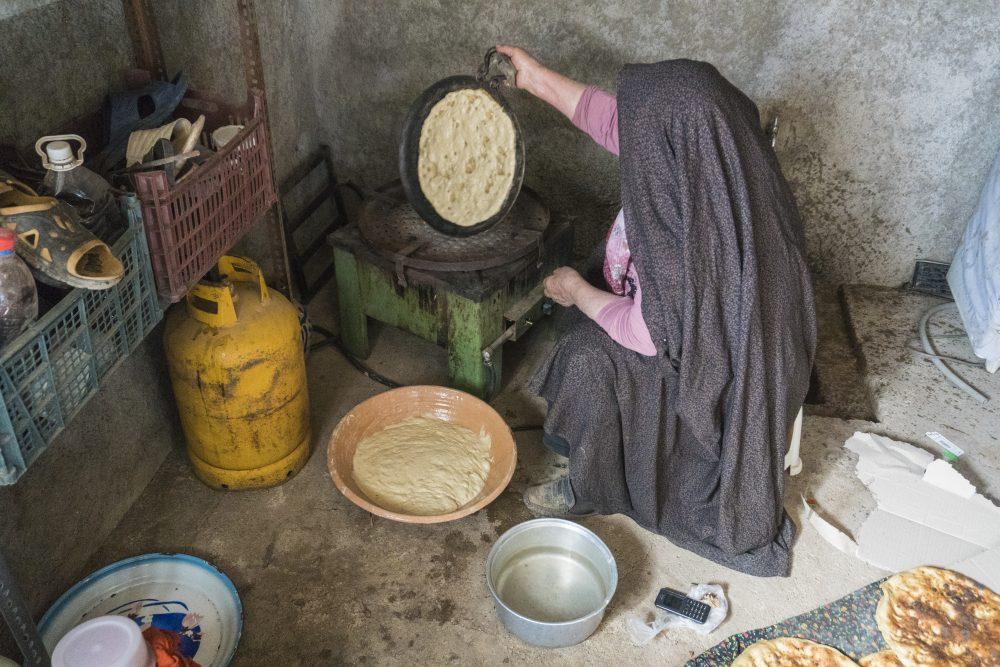 Bathroom Business
Bathroom Business
It’s common in the Islamic world to use water for washing instead of toilet paper. So either learn to use water, or cart your own toilet paper around in your pockets! If you forget, grabbing a couple napkins is a good trick. Be prepared for squat-style toilets too, instead of the porcelain throne you might be used to.
If You’re Happy and You Know It, Clap Your Hands
Don’t get confused if you get on a bus or tour van and all the locals clap their hands to the unusual Persian music. They’re just having fun. We took one night bus between cities and were awoken at 1am to loud music and clapping by the locals!
Party Time, Persian Style
Alcohol is forbidden in Iran, and for Muslims in general. Some people do drink wine, which they buy from Christian Armenians living in Iran. Youth seem to smoke marijuana, judging by the occasional waft we’d get while walking in the parks and streets. Once, we were invited out for a night on the town by locals, which consisted of a big cup of cocoa in a coffee shop followed by a stroll.
Local Food and the American Dream
When you think about the fact that American companies are restricted from operating in Iran, you would expect to not see any of the famous fast food chains there. But think again… You will easily find eateries decorated as KFC, Burger King (or “King Burger”) or the big yellow M in most big cities–copycats of American brands, and proud of it! Local food mostly consists of chicken and rice, but every region has different specialties and you can find nice lamb, goat meat, fish and seafood meals, too. They also consume a lot of delicious breads.
A Special Place
Iran is truly a special place. It stands out in so many ways and sometimes can be overwhelming. We were surprised by new things every day, met so many different and wonderful people, and though Iran can be challenging at times, it’s worth it for all the smiles, the welcoming families and meals, interesting traditions, architecture, history and fantastic mountain roads.
Follow Asta’s round-the-world adventures on her Instagram
or her BLOG
